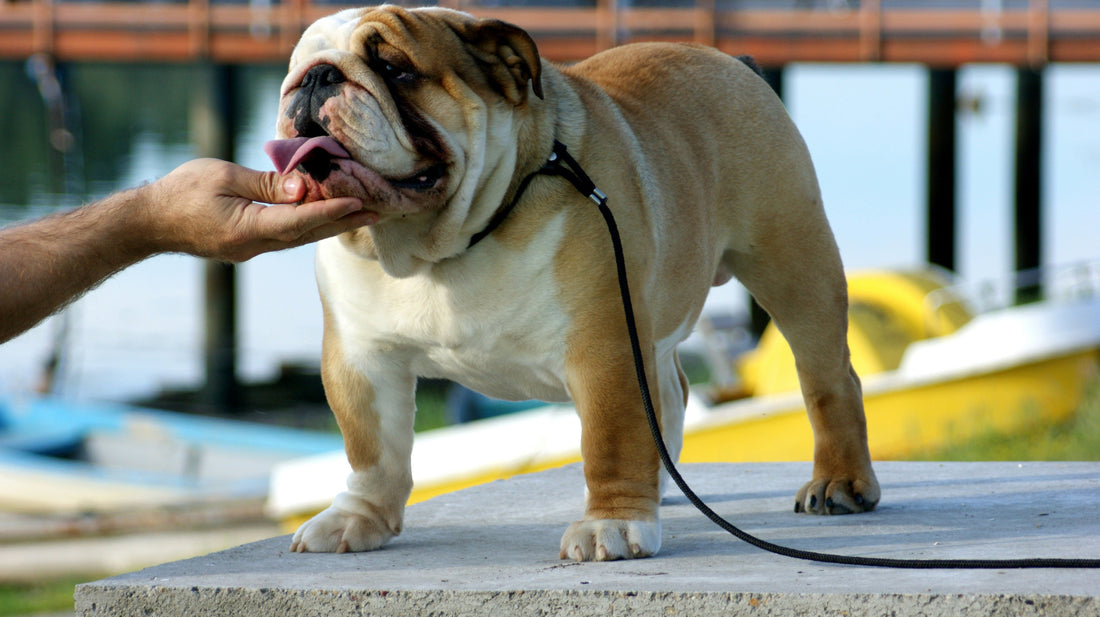
Is Your Dog "Just a Little Chonky"? How to Tell and What to Do
Share
Think Your Dog's Weight is Normal? Think Again!
Studies show a surprising trend:
- 60% of dogs are overweight or obese.
-
40% of pet parents with overweight pups think their dog’s weight is fine!
- Only 17% recognize when their pet is obese.
So, how can you really know if your dog’s carrying extra weight? Here’s a quick way to check:
Quick Ways to Check if Your Dog is Overweight
- The Rib Check: Run your fingers gently along your dog’s sides.
- Healthy weight: Ribs feel like knuckles in a loose fist.
- Overweight: If you need to press hard to feel ribs, there’s extra padding!
-
Immediate Action Needed: If you can’t feel ribs at all.
- The Waistline Peek: Look at your dog from above.
- Healthy weight: Waist visible behind the ribs, with an hourglass shape.
-
Overweight: If it’s oval or circular, that’s a sign of extra pounds.
- The Side Profile View: Check from the side.
- Healthy weight: Belly slopes up behind the ribs.
- Overweight: A sagging belly is a sign to take action.
Red Flags to Watch For:
Has your dog been…
- Slower to get up? Struggling with the stairs or hopping on the couch?
-
Easily tired? Needing breaks during walks or play?
-
Less active? Spending more time lying down than playing?
-
Having trouble with grooming or squatting?
If so, it may be time to help them get back in shape!
Try the 48-Hour Doggie Check-up
Get a clearer picture of your pup’s health in just two days:
Day 1:
- Morning: Take three photos—top view, side view, standing view. Go for a walk and note any extra stops.
-
Afternoon: Track playtime duration and any difficulty getting up.
- Evening: Measure food portions and treats.
Day 2:
-
Physical Check: Do the rib test, measure neck, chest, and waist, and snap a photo.
-
Activity Tracker: Count times they get up, lie down, ask to play, and pant.
Body Condition Score (BCS)
You can do this at home! Here’s a quick scale:
-
1–3 (Underweight): Ribs and spine visible, no body fat.
-
4–5 (Ideal): Ribs easily felt, visible waist, natural tummy tuck.
-
6–7 (Overweight): Ribs hard to feel, waist barely visible.
-
8–9 (Obese): No visible waist, sagging belly, fat deposits.
Myths We Tell Ourselves
“He’s just big-boned!” Even big-boned dogs should have a waist and visible ribs.
“It’s his breed!” Some breeds are stockier, but they should still have a defined waist and move freely.
“She’s just getting older.” Age doesn’t cause weight gain. Older dogs need fewer calories, but shouldn’t be overweight.
Steps to Help Your Dog Slim Down Safely
- Start Small Today
-
- Take baseline photos, measurements, and keep a food diary.
- Measure portions to avoid overfeeding.
- Take baseline photos, measurements, and keep a food diary.
2. Add Extra Walks This Week
-
- Aim for an extra 10-minute walk daily.
- Use a measuring cup for food and treats.
3. Get a Vet’s Advice
-
- They can guide you on calories, food choices, and exercise.

When to Call the Vet.
Watch for:
- Difficulty breathing with light exercise
- Trouble getting comfortable while sleeping
- Constant panting, reluctance to move, or pain when getting up
Keeping your dog at a healthy weight can add up to 2.5 years to their life. Start small today for a happier, healthier pup!

